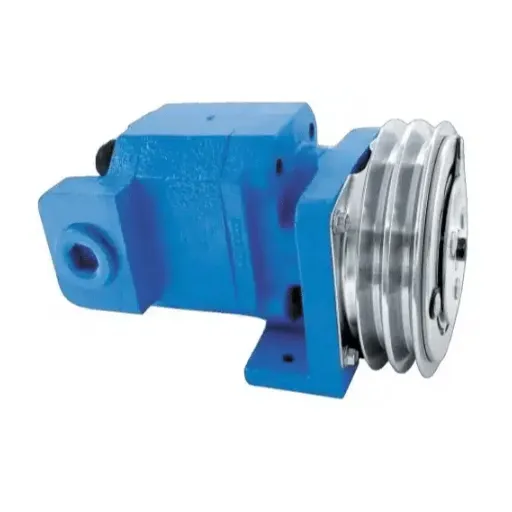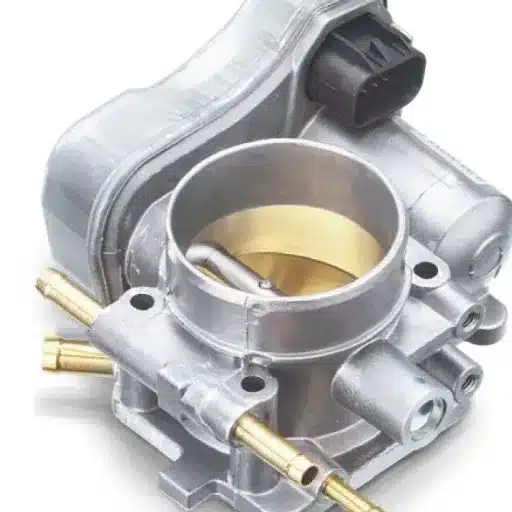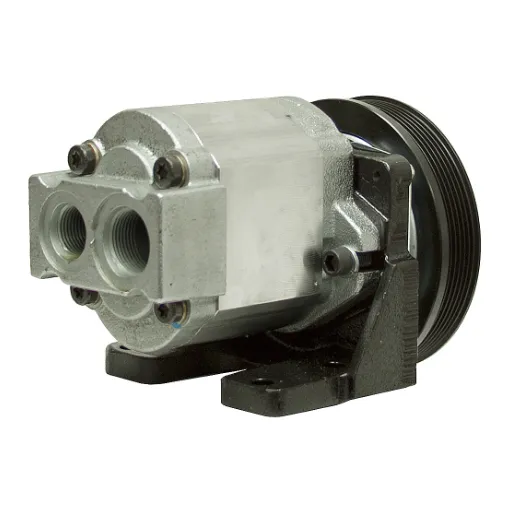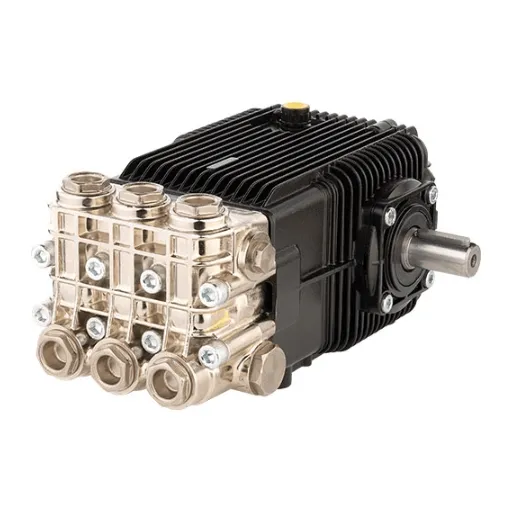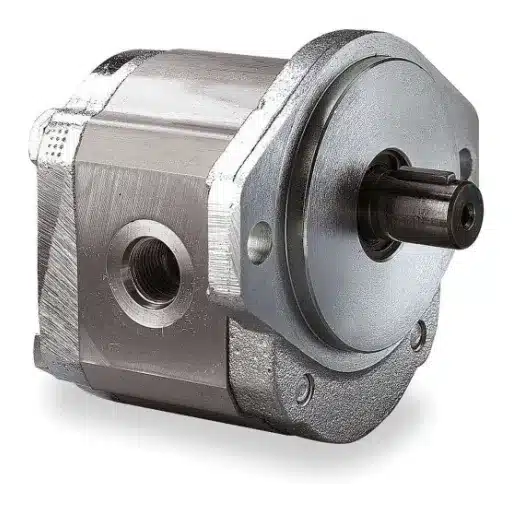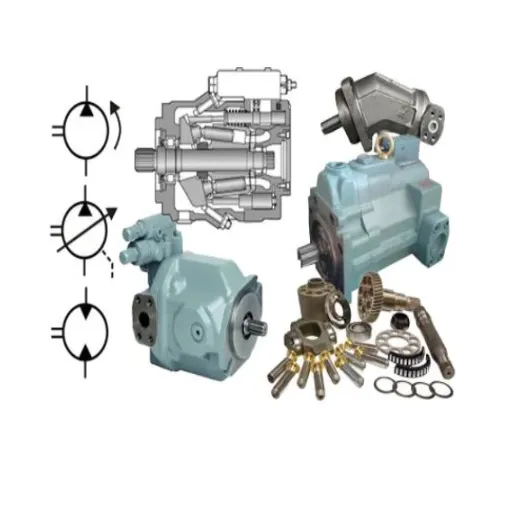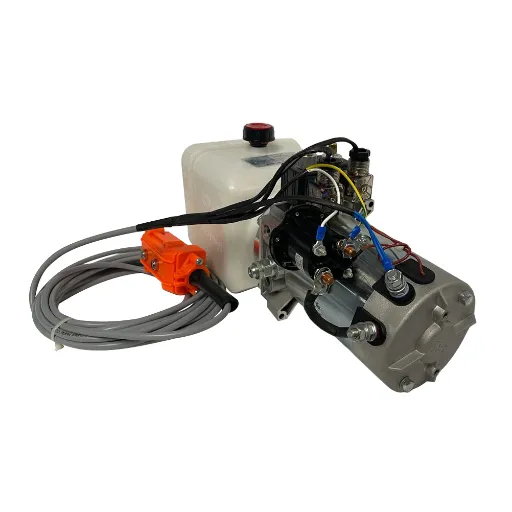The Hydraulic Clutch Pump has been the heart of all modern machinery and automobiles. They provide reliable and efficient mechanisms to transfer power through hydraulic systems. Whatever high-pressure industrial applications you may be into, or if one is going into automotive applications with the intent of improving efficiency, it is a must to understand the advantages of a hydraulic clutch pump. This article will discuss the top advantages of the powerful hydraulic clutch pumps and how they use these to optimize performance and ensure proper operation in environments that are hard on machines while reducing wear and tear. By the end of this guide, you should have a clear picture of why hydraulic clutch pumps are a ubiquitous name in almost all industries.
Understanding the Hydraulic Clutch System
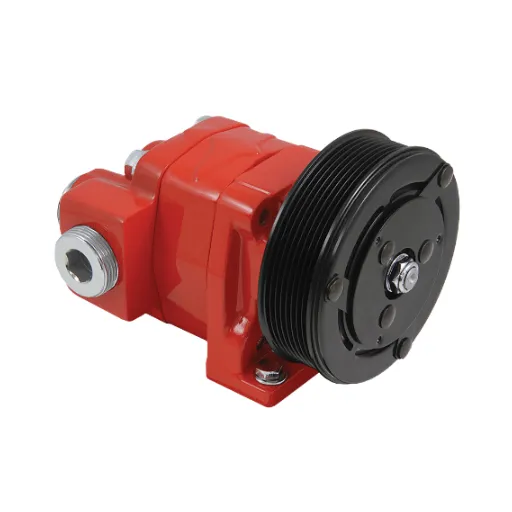
What is a Hydraulic Clutch Pump?
A hydraulic clutch pump is an integral element of the hydraulic clutch system that allows for power transmission between an engine and the drivetrain in various mechanical settings. With a mechanical input, it initiates hydraulic pressure acting upon further hydraulic components to efficiently and effectively engage or disengage a clutch. In layman’s terms, it offers a melding of fluid dynamics to reduce the physical effort, while precision is ensured.
The hydraulic clutch pumps are designed for even the most demanding conditions, ensuring consistent and reliable performance. With the hydrostatic pump, pressure remains steady, so that the clutch plates engage under controlled conditions, never slipping or wearing needlessly, so much so that this precision is largely helpful in cases where high torque transfer or operating conditions under heavy load come into play, such as industrial machinery, agricultural equipment, and commercial vehicles.
Hence, these pumps are prized for increasing the longevity of mechanical parts. Implementation of hydraulic forces reduces friction during clutch actuation, which extends the life of interfering parts and lessens the need for maintenance. This, in turn, renders hydraulic clutch pumps a must-have for any industry that values ruggedness, efficiency, and ongoing performance in demanding conditions.
How Does a Hydraulic Clutch System Work?
A hydraulic clutch system operates by transmitting force through a hydraulic fluid to engage and disengage the clutch mechanism. The process begins when the clutch pedal is pressed by the driver, which activates the master cylinder. This component converts mechanical force from the pedal into hydraulic pressure. The pressurized fluid is then fed through a series of hoses and tubes to the slave cylinder.
Near the clutch assembly lies the slave cylinder, a critical piece that uses the pressure generated by the hydraulic system to push a rod or lever that acts directly on the clutch release mechanism. The rod disengages the clutch, breaking the link between the engine and the transmission so that the gear changes can be made smoothly.
Upon releasing the clutch pedal, the pressure of the hydraulic fluid drops, and a return spring re-engages the clutch with the flywheel. This sequence of events is precisely completed because the hydraulic fluid is incompressible, allowing smooth and accurate transmission of force. With this kind of efficiency and almost no mechanical friction, the vehicles equipped with hydraulic clutch systems gain more performance and reliability.
Components of a Hydraulic Clutch Pump
A hydraulic clutch pump consists of several integral components working together to ensure efficient force transfer for clutch engagement and disengagement. Below is a breakdown of the key components:
Reservoir
The reservoir acts as the storage cabinet for hydraulic fluid. An adequate amount of fluid must be supplied to the system for smooth functioning, compensating for any negligible losses due to wear or small leaks. It is generally made of corrosion-resistant materials and placed so that it can be easily accessed for maintenance and refilling.
Master Cylinder
When the clutch pedal is depressed, the master cylinder develops hydraulic pressure. It converts the mechanical force exerted on the pedal to the hydraulic pressure, which is then carried through the system. It contains pistons and seals to hold the pressure without any leakage of fluid.
Hydraulic Lines
Hydraulic lines are conduits transporting fluid under pressure from the master cylinder to the slave cylinder. These lines are generally formed of rubber-reinforced or steel and withstand high pressure so as to avoid any loss of hydraulic fluid.
Slave Cylinder
The slave cylinder receives hydraulic fluid in its pressurized state from the master cylinder. It applies this hydraulic pressure to actuate the pushrod and thereby disengage or engage the clutch. The slave cylinder is vitally important in transferring hydraulic force into mechanical movement.
Pushrod and Return Spring
As a connection between the slave cylinder and the clutch fork, the pushrod transmits the required motion to operate the clutch mechanism. The return spring ensures that the pushrod and clutch fork return to their original positions when the clutch pedal is released.
Each of these components is an integral part of the hydraulic clutch system. Their flawless integration helps to transmit the force accurately with minimal wear and to enable a variety of driving conditions in which it operates reliably. Maintenance and inspection of these components are very important in preventing system failures and ensuring long operational life.
Advantages of Hydraulic Clutch Pumps
Smoother Operation Compared to Traditional Systems
Hydraulic clutch pumps provide superior performance and operational efficiency as compared to mechanical clutch systems. Whereas the mechanical system requires the driver to apply direct physical force, making clutch operation smooth, the hydraulic mechanism modulates the hydraulic pressure within the system to apply force more evenly, limiting the effects of friction and mechanical wear.
Being mechanical in nature, traditional systems are generally prone to degrading jerkiness and inconsistent feeling in response to variations in driver input, component wear, etc. Fluid dynamical methods are employed by hydraulic pumps to maintain consistent force application, thereby enhancing precision and reliability. Various researches make it evident that one has to endure less driver fatigue and enjoy responsive controls at the onset of traffic or heavy utilization while working with hydraulic clutch systems. Modern hydraulic engineering and better seals have helped further improve these systems with respect to resources as well as durability.
Hydraulic clutches are a significant technological step above regular cable-actuated hydraulic systems that eliminate the problems of cable stretch and mechanical degradation, especially for high-performance or commercial-oriented applications. These benefits portray the growth in favor of the hydraulic clutch pumps in automotive and industrial setups.
Increased Durability and Longevity
The hydraulic clutch system is designed explicitly for enhanced performance and an extended lifespan due to its inherently robust construction and advanced engineering materials. Since this system operates fluidically, its action reduces such inter-surface friction and consequently, mechanical wear on cable systems. Newly improved sealing materials and corrosion-resistant materials also render this system durable enough for harsh operating environments.
Studies have shown that hydraulic clutches hold certain advantages over their conventional counterparts, mainly due to their ability to retain operational integrity in high-temperature and high-pressure operating conditions. For example, in modern hydraulic clutch pump testing for durability, the pumps are run under continuous cycling conditions that demand service life beyond 100,000 operational cycles without any significant degradation in performance.
This improved longevity cut down maintenance intervals while allowing uninterrupted service in critical applications involving heavy-duty vehicles, construction machinery, and industrial equipment.
Statistical findings also put forth the argument that transitioning into hydraulic clutches is a cost-effective decision. An analysis conducted among industrial machinery depots showed a 25% drop in downtime and an increase of 30% in overall operational efficiency when hydraulic clutches substituted their mechanical alternative. These systems are indeed setting new durability precedents, making them indispensable in both the automotive and industrial worlds.
Reduced Maintenance Requirements
One of the more important advantages of hydraulic clutches is that they are low-maintenance as opposed to the conventional mechanical clutch. For example, Hydraulics act through fluid dynamics, thus eliminating certain physical wear mechanisms common to mechanical factors. The loss of friction at this point leads to a prolonged period of service of major parts like the clutch plates and pressure assemblies. Also, the self-lubricating nature of the hydraulic system diminishes incapacitations or need for alternative adjustments to keep its performance.
Independent studies show that the reliability of hydraulic clutches exceeds that of mechanical ones in the long run. Operators of such machines report a maintenance activity reduction of up to 40% when the hydraulic systems are being used.
Most hydraulic clutches, moreover, use sealed systems that are kept away from contaminants like dust and grit, frequent agents of mechanical failure. Due to this serious durability factor, industries that involve the use of heavy machinery are assured of much less downtime and reduced operational costs.
A further ease of maintenance brought by hydraulic clutches lies in the modularization of these systems. Unlike mechanical systems that, for repair, require disassembly of adjoining parts, hydraulic systems permit faster, localized interventions. So, while labor cost is reduced, the periods of downtime for the whole machinery are also minimized.
Applications Across Various Industries
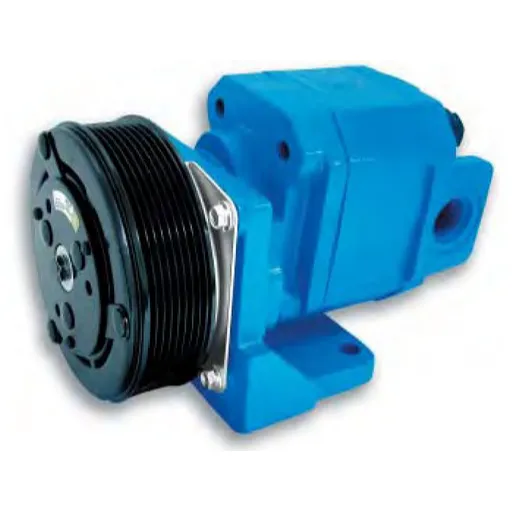
Hydraulic Clutch Pumps in the Automotive Sector
A hydraulic clutch pump serves multiple purposes in the automotive sector: improving performance, adding reliability, and ensuring precision in various applications. Their incorporation into the vehicle systems of the new generation has come to the rescue of the manufacturers to satisfy the needs of consumer and commercial vehicles. The five key applications wherein hydraulic clutch pumps have been a vital part include:
-
Passenger Vehicles
Wherever automotive materials are used, hydraulic clutch pumps generally operate manual transmission systems to assist in making smoother gear shifts with minimum human effort. These pumps maintain a constant hydraulic pressure and thus help in clutch wear reduction and transmission system enhancement.
-
Commercial Trucks
Hydraulic clutch pumps aid heavy-duty commercial trucks in coping with the heavy torque demands of hauling heavy cargo loads. Such pumps allow the clutch to engage and disengage with precision so that maximum power transfer and the usefulness of the transmission system are ensured.
-
Construction Equipment
Construction vehicles, such as loaders and bulldozers, use hydraulic clutch pumps to operate complex machinery. Their capacity for precise control and performance at high levels under harsh working conditions makes them core to the construction-associated network.
-
Agricultural Machinery
Hydraulic clutch pumps are widely used in tractors and other agricultural equipment to control power transmission. They facilitate the attachment functioning, such as with plows and harvesters, while limiting energy dissipation and mechanical stress.
-
Electric and Hybrid Vehicles
With the increase in acceptance of electric/hybrid vehicles, hydraulic clutch pump systems are being developed to optimize performance in automated manual transmission systems. Incorporating advanced materials and more compact designs helps meet energy efficiency requirements and environmental standards.
The versatility and flexibility of hydraulic clutch pumps are what place them at the forefront of auto evolution, consistently meeting the challenges emerging out of modern-day transport systems and equipment.
Usage in Agricultural Machinery
Hydraulic clutch pumps were regarded as one of the key machinery for modern agricultural operations that could perform operations requiring precision and efficiency. By imparting power transmission and working control seamlessly, these pumps prove indispensable to critical equipment such as tractors, harvesters, and loaders. By virtue of advanced hydraulics technology, these pumps help increase machinery response while remaining dependable under heavy loading conditions.
Many agricultural operations demand the hydraulic clutch pump to precisely modulate torque and speed under varying field conditions. In this case, the pumps ensure the maintenance of constant pressure and flow of the fluid to provide optimum performance to equipment attachments like ploughs, seeders, and spray. Also, these pumps withstand intensive, prolonged use in large-scale farming operations while performing efficiently in high-pressure applications.
Recent innovations have designed hydraulic clutch pumps using wear-resistant materials and sensor-based control systems, improving durability and functionality. This also increases the life of the equipment and reduces downtime, an energy-efficient and cost-effective need in the agricultural industry of agriculture. As agriculture moves towards automation and precision farming, so grows the importance and thus is cemented by hydraulic clutch pumps, ensuring productivity and sustainability in this vital sector.
Implementation in Construction Equipment
Hydraulic clutch pumps, so to speak, turn the hearts and pulse of construction work in providing power to systems vital for heavy machinery like excavators, loaders, and cranes. These pumps hence transform power being transmitted between hydraulic systems and other mechanical components on the basis of input varying with load application. Modern hydraulic clutch pumps, made with state-of-the-art materials and fabricated with high precision, therefore, can withstand extreme pressure, hence preventing breakdowns in situations where it really matters.
The latest modification in this technology has seen the introduction of ECMs (electronic control modules) that control and fine-tune the pump performance by assessing working conditions like pressure, temperature, and flow rates on the fly. These parameters can hence be altered dynamically to save energy and fuel usage by the construction equipment.
For example, adaptive control allows the pump to speed up or slow down depending on the power requirement, thereby avoiding the wastage of energy.
Industry reports reveal a steady increase of 15-20% in operational efficiency where the latest versions of hydraulic clutch pumps are installed in the machinery compared to the older versions. Hence, faster project completion and lowering of the overall carbon footprint of construction activities toward sustainability goals. Instrumentation, aided by IoT, will thus propose maintenance that detects and prevents soon-to-be failures, thus limiting downtime and minimizing maintenance costs.
The ergonomic nature of implementations in hydraulic clutch pumps, alongside the compatibility of such pumps with renewable fluid technology, further cement their role in catalyzing construction equipment innovation. The advancements thus improve reliability and compound the productivity as well as the sustainability of construction projects.
Performance Enhancements with Hydraulic Clutch Pumps
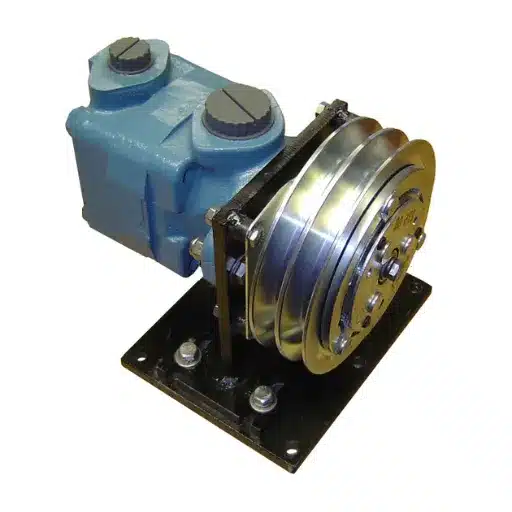
Improved Efficiency in Vehicle Operation
Hydraulic clutch pumps greatly improve the efficiency of vehicle operations by giving very precise control over the transmission of power. This power was in the form of a transfer disengaging and re-engaging, whose operation could be utterly silent against mechanical losses while optimally consuming fuel. Simultaneously, these pumps perform smoother operation under variable loads and speed conditions, a very common scenario in construction vehicles and heavy-duty vehicles, by limiting manual intervention. The presence of automatic modulation also prevents unnecessary maintenance of the vehicle components themselves, and this goes a long way to heighten the degree of life in service.
A key factor making this system efficient is its use of the adaptive pressure control system built into modern hydraulic clutch pumps. Hence, they adjust and modify themselves depending on real-time needs so that they consume energy only when necessary. This type of system also reduces energy loss to idling, and hence supports environmental awareness by cutting down emissions and meeting stringent regulation requirements.
Durability and reliability of hydraulic clutch pumps have been further increased because of advanced materials and high-tech manufacturing methods. An optimized design that retards wear while ensuring consistent performance under extremely hot and pressurized operating conditions is good news for industries that work with heavy-duty vehicles, in terms of dollars saved through fewer repairs and greater uptime. Thus, hydraulic clutch pumps hold a place of paramount importance in the vehicular realm and can spur innovation to usher in a newer world of sustainable and energy-efficient machinery.
Boosting Reliability in Heavy Machinery
In heavy equipment, reliability fundamentally corresponds with the core system efficiency and durability. One such system in question is hydraulics, one of the most important systems that smoothens many operations, such as lifting, digging, and loading. With advances in materials and processes, hydraulic components are now built to an operating pressure much higher than their traditional counterparts, while also requiring longer usage cycles. Improved wear resistance coatings, better precision machining, and sealing have helped lengthen the life-cycle of component systems considerably to minimize unplanned downtimes and frequent maintenance.
Other technological means have been used in the field to be essentially decisive about reliability in heavy machinery. Internet of Things (IoT) sensors and predictive maintenance algorithms will allow for the real-time monitoring of equipment health with continuous data collection. For instance, the building blocks of predictive maintenance assign values to temperature, pressure, and fluid levels with great precision, detect patterns or abnormalities that could eventually lead to a mechanical failure, way before the failure actually occurs. Artificial intelligence-powered predictive maintenance analytics can now analyze this data and detect abnormalities or unusual patterns, pointing to wear or imminent issues, allowing operators to intervene with scheduled repairs on planned downtimes instead of having to deal with unexpected failures.
Energy-efficient hydraulic solutions, hybrid, and full-electric drivetrains also shape heavy machinery reliability issues. While the electric design takes off the dependency on complex mechanics that produce wear and tear, it simultaneously decreases the total operating costs and improves environmental sustainability. The other way is that these systems come integrated with regenerative technology, which reclaims energy that would otherwise be wasted during braking or in operation for reuse. Together, these developments provide an unprecedented opportunity for industries to realize a new level of reliability, efficiency, and sustainability in their machinery- a huge landmark in industrial innovation.
Case Studies Demonstrating Real-World Benefits
Automation in Automotive Manufacturing
One of the major automotive manufacturers installed advanced regenerative technologies down the assembly lines, specifically for the robotic systems and conveyor mechanisms. The company, by the way of regenerative braking, stated that it was able to reduce energy consumption by 30% during some crucial operational phases. Maintenance time also decreased with better reliability of systems. Such efficiencies translated into both reduced operational costs and having the producers work towards carbon-neutral production.
Energy Efficient Smart Grids
An energy company deployed regenerative energy storage mechanisms into its wider regional smart grid structure. Capturing and storing excess energy when demand was low and feeding it back to the system at times of peak demand brought an increase in energy efficiency by 40 percent. Hence, this gave way to engineering a 25-percent dip in the use of non-renewable sources of energy, underscoring the significance of regenerative technologies in improved performance and environmental sustainability of a grid.
Heavy Machinery for Mining Operations
A global mining firm replaced the haul truck’s traditional braking systems with regenerative ones. Thus, kinetic energy was harnessed and utilized to power the truck’s auxiliary systems, cutting fuel consumption by some 15 percent and also increasing the service life of important components. This does have some multibillion-dollar saving in a year and the fossil carbon intensity of the operational fleet has been demonstrably reduced.
Such highlighted scenarios demonstrate how regenerative technology integration in different industries has turned economic and environmental worth into a quantified reality, setting the stage for these technologies as crucial considerations toward re-industrialization.
Comparative Analysis of Clutch Systems
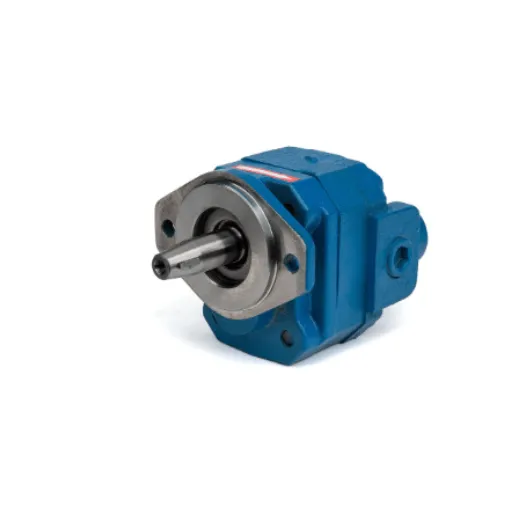
Hydraulic vs. Cable-Operated Clutches
Hydraulic clutches ensure smoothness of operation, durability, and less maintenance, whereas the cable clutches are simple and put into place on the cheap but grout to wear and low precision.
| Aspect | Hydraulic Clutch | Cable-Operated Clutch |
|---|---|---|
| Performance | Smooth | Less smooth |
| Lifespan | Long | Moderate |
| Upkeep | Minimal | Frequent |
| Accuracy | High | Low |
| Expense | Higher | Lower |
| Durability | Strong | Weak |
| Design | Complex | Simple |
| Usage | Heavy-duty | General |
Mechanical Clutches: Pros and Cons
Mechanical-type clutches are an important element for many motions and vehicles, working as an interface between power generation and power transmission. Though reliable and simple, their operating characteristics become application-dependent and design-dependent. There are five detailed pros and cons in consideration of mechanical clutches:
✓ Pros
Simplicity of Design
Mechanical clutches have a simple form of construction and so can be readily understood, manufactured, and repaired. The simplicity of the design thus brings in the advantage of comparatively low production costs and maintenance.
Cost-Effective
Mechanical clutches with a simple design do not comprise hydraulic or electronic parts; hence, their production and maintenance cost is the least.
Dependable Under Normal Conditions
While they perform well under normal operating environments, the mechanical-type clutches do rely upon maintenance.
Availability of Replacement Parts
Being traditionally used, the elements of mechanical-type clutches are widely available, thus easing any repair or replacement.
Manual Control
These clutches respond to manual control and translate this operation with precision, suitable particularly for some automotive or industrial applications.
✗ Cons
More Maintenance Is Required
Unlike hydraulics, mechanical clutches demand periodic adjustments to maintain efficient operation as the components of such systems wear out.
Less Smooth Work
Smoothness of engagement and disengagement can be less in mechanical clutches compared to hydraulic ones, thereby increasing wear and tear.
Less Life
This is due to the physical wear of cable or linking components in mechanical clutches, making it less lasting in comparison to hydraulic or advanced electronic mechanisms.
Less Precise
In most cases, mechanical clutches are less precise than hydraulic ones and thus inappropriate for tasks requiring very fine controller adjustment.
Heavy-Duty Performance
Although mechanical clutches may be quite suitable for general applications, they offer rather poor performance for heavy-duty or high-load conditions due to their lack of durability and precision.
In this comparison, it becomes evident how practical yet limited mechanical clutches are; therefore, they are best for applications in which cost and simplicity take precedence over the need for performance and durability.
Why Choose Hydraulic Clutch Pumps?
The hydraulic clutch pump is preferred over the mechanical one because of its accuracy, efficiency, and longevity. Hydraulic pressure systems operate by precisely controlling fluid flow, thereby facilitating smooth, uniform motion even in high-pressure or heavy-duty applications. This accuracy leads to better performance, which is important in applications where exact transfer of torque and minimum fault tolerance are necessary.
And they offer exceptional reliability in severe working conditions. Hydraulic systems lessen mechanical strain, thereby increasing the work life and decreasing maintenance loads for high-pressure hydraulic clutch pumps, while the mechanical systems are subject to wear and tear due to friction. Their ability to endure high loads makes them suitable for heavy industrial and automobile applications demanding consistency.
Next in the series of advantages is the ability of hydraulic clutch pumps to be adaptable. This is because these systems can be adjusted to match desired operational criteria, ensuring the best performance across different scenarios. On the other hand, the flexibility combined with efficiency and durability renders hydraulic clutch pumps as the first pick for scenarios where performance, reliability, and cost-effectiveness are critical benchmarks.
Frequently Asked Questions (FAQ)
Q: What are the benefits of using hydraulic clutch pumps?
The benefits of using hydraulic clutch pumps include operational fluency and efficiency in engaging or disengaging the clutch. Hydraulic clutches transmit power through the use of hydraulic fluid, and hence, the engagement is much smoother, whereas automobiles function with a more conventional mechanical system. So, one can expect less wear and tear on the clutch, which provides its lifespan and reliability in various applications such as truck applications or manual transmission vehicles.
Q: How do hydraulic clutch pumps improve performance and efficiency?
Hydraulic clutch pumps improve performance and efficiency by hydraulically actuating the clutch and hence ensuring smooth engagement. This control ensures smooth clutch transition and better vehicle control; besides less frictional loss, the environment also becomes better, with less fuel consumption and efficient operation.
Q: What are some hydraulic clutch pump maintenance tips?
Keep it inspected for leaks, hydraulic fluid levels in check, and lubricate the main components of the hydraulic clutch pump. Ensuring the hydraulic fluid is at proper levels is of utmost importance in regards to the performance of the system. This way, one can keep problems at bay while ensuring the long life of the hydraulic system.
Q: What is the significance of an actuator in the hydraulic clutch system?
The hydraulic clutch system’s actuator makes the clutch move when it is pressed. It translates hydraulic pressure generated by the pump to mechanical movement, either engaging or disengaging the clutch as required. This component is vital for the overall functionality and reliability of the hydraulic clutch system.
Q: Can hydraulic clutch pumps be put to use for truck applications?
Hydraulic clutch pumps are quite common in truck applications due to their ability to meet higher horsepower and displacement requirements. They provide a reliable means of engaging and disengaging transmission power, thereby making them an ideal choice for heavy vehicles that need to perform consistently under varying load conditions.
Q: What kind of problems are commonly associated with hydraulic clutch pumps?
Typically, we have leaks occurring throughout the system, low hydraulic fluid levels, and wear of the pressure plate or actuator. Prompt diagnosis of and response to these issues is imperative to keeping the clutch from suffering damage and maintaining optimum operational efficiency. Regular inspection would allow one to catch these issues before things get out of hand.
Q: How does hydraulic fluid influence the performance of a hydraulic clutch pump?
Hydraulic fluid acts as a medium for transmission of hydraulic power-whether from the pump to the actuator, or hydraulic clutch pumps. Good hydraulic fluid levels ensure smooth operation and good pressure application of the clutch system, and hence poor levels of hydraulic fluid automatically imply poor absorption in the good functioning of the clutch system. Also, the hydraulic fluid must be the right type so as not to damage the system components.
Q: What is the importance of a mounting kit for hydraulic clutch pumps?
The mounting kit is important for hydraulic clutch pumps as it sets proper alignment and mounting of the pump to the chassis. That well-installed pump would have minimal vibrations while working at maximizing the efficacy of the hydraulic process meant for smoother engagement and reliability of the clutch system.
Q: How is the hydraulic clutch system’s smoother engagement as compared to the traditional system?
Hydraulic clutch systems assure smooth engagement by using hydraulic pressure to actuate the clutch mechanism as opposed to the clutch system in which mechanical linkages are used. This enables the clutch to progressively engage and disengage, consequently reducing the shock loads imposed on the drive line and giving a smooth driving experience. The hydraulic system is self-adjusting to even provide further operating smoothness.
Conclusion
Hydraulic clutch pumps represent a significant advancement in mechanical power transmission technology, offering superior performance, durability, and efficiency across various industrial applications. Their ability to provide smooth operation, reduced maintenance requirements, and enhanced reliability makes them the preferred choice for modern automotive, agricultural, and construction equipment. As industries continue to evolve towards more sustainable and efficient solutions, hydraulic clutch pumps will undoubtedly play a crucial role in driving innovation and performance optimization.



